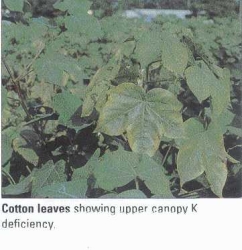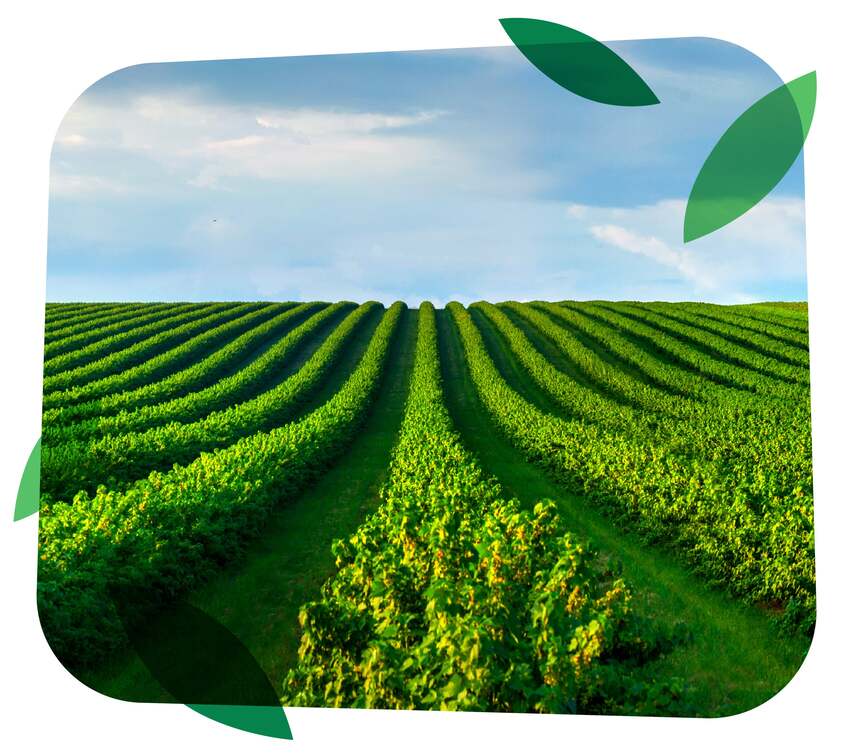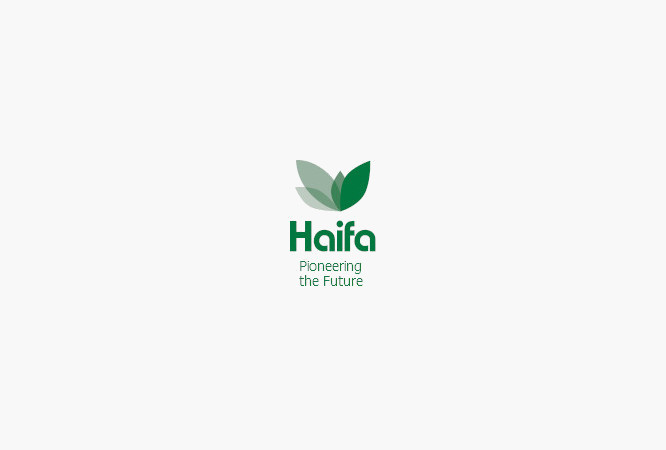Fertilization of cotton: how to get better yield, water use efficiency and fibre fineness
By supplying the exact amount of needed nutrients with Haifa's fertilizers, the cotton reaches its maximum quality
Plant population: 60,000-90,000 plants/ha.
Expected yield: 4.0 MT/ha .
Recommended average rates of nutrients (Kg/Ha):
|
N |
P2O5 |
K2O |
|---|---|---|
|
200-235 |
80-110 |
200-250 |
Nitrogen - Increases plant height, their boll-bearing capacity and seed weight, and improves seed yield. To obtain the highest efficiency from N it is recommended to base-dress with one-third of the total amount of N and to divide the rest amount amongst the irrigations till the beggining of August.
Phosphate - Improves root development, water use efficiency, the enrgy balance and the weight, oil and protein contents of the seed as well as fiber quality.
Potassium - Improves fibre fineness and strength, and results in early maturity of the crop.
|
Nutrients required (kg/ha) |
Recommended fertilizers (kg/ha) |
||||
|---|---|---|---|---|---|
|
N |
P2O5 |
K2O |
AN |
TSP |
SOP |
|
120 |
92 |
135-155 |
360 |
200 |
280 |
Fertigation (to be applied during 90 irrigation days)
|
Growth stage |
Nutrient demand |
Recommended fertilizers |
||||
|---|---|---|---|---|---|---|
|
N |
P2O5 |
K2O |
AN |
|||
| Vegetative development |
0.03-0.1 |
0.02-0.07 |
0.03-0.05 |
0.06-0.12 |
0.03-0.12 |
0.05-0.25 |
| First flower up to two weeks after flowering |
0.25-0.35 |
0.09-0.18 |
0.23-0.28 |
0.5-0.6 |
0.15-0.30 |
0.5-0.7 |
| Boll development |
0.6 |
0.18-0.09* |
0.7-0.28* |
1.5-0.6* |
0.3-0.15* |
1.2-1.4 |
TSP = Triple superphosphate (0-46-0)
SOP = Potassium sulfate (0-0-50)
AN = Ammonium nitrate (34% Nitrogen)
Multi-K = Potassium nitrate (13-0-46)
MAP = Mono ammonium phosphate (12-61-0)
* Rates are decreasing during these stages
Experimentation
The following is a layout of a characteristic experiment for the elucidation of the Multi-K spraying benefits.
Objective: to increase yield and lint quality.
Treatments:
- Control, unsprayed.
- One application of 20 Kg/Ha Multi-K.
- Two applications of 20 Kg/Ha Multi-K.
- Three applications of 20 Kg/Ha Multi-K.
- Four applications of 20 Kg/Ha Multi-K.
Applications should start when first flowers appear, with intervals of 7-10 days.
Applications can be combined with insecticides.
When applying by ground sprayers please provide 400-500 liter spray solution per Ha.
Applications should take place when plants are in full turgor, preferably early in the morning.
Effect of Method and Time of Potassium application on Cotton Lint Yield (Better Crops/ vol. 82 (1998, No. 2 p. 25-27):
Foliar KNO3 applied at 5 to 7 day intervals resulted in significant yield increase over the untreated plots in 1995. This increase in yield was 175 Lb/A (0.196 MT/ha). The higher lint yield for the split soil-applied and foliar KNO3 treatments indicates the importance of plant available K at the time of boll filling.
Nutrients uptake data
Variety: Acala.
Soil type: Loamy.
Plant Density: 60,000 plants / Ha.
Expected yield: 4.0 T/Ha.
Growth period (days from seeding/planting to harvest): 160 days.
|
Time interval |
Nutrients requirement (Kg/Ha/Day) |
||
|---|---|---|---|
|
N |
P2O5 |
K2O |
|
|
1-10 |
0.10 |
0.00 |
0.12 |
|
11-20 |
0.20 |
0.11 |
0.12 |
|
21-30 |
0.20 |
0.11 |
0.36 |
|
31-40 |
0.50 |
0.23 |
0.60 |
|
41-50 |
1.00 |
0.23 |
0.60 |
|
51-60 |
2.00 |
0.69 |
2.41 |
|
61-70 |
2.50 |
0.92 |
3.01 |
|
71-80 |
4.50 |
2.06 |
7.23 |
|
81-90 |
3.20 |
1.15 |
2.41 |
|
91-100 |
3.30 |
1.26 |
2.41 |
|
101-110 |
5.00 |
2.40 |
3.01 |
|
111-120 |
0.50 |
0.46 |
- |
|
121-130 |
0.30 |
0.23 |
- |
|
131-150 |
0.07 |
0.16 |
- |
|
150-160 |
- |
- |
- |
|
Total (Kg/Ha) |
240 |
103.06 |
222.85 |
Source: B. Bar-Yosef . Fertilization under drip irrigation.
Macro elements removed by 1 ton cotton seed
|
N |
P |
K |
Ca |
Mg |
S |
|---|---|---|---|---|---|
|
----------------------- Kg/ha ------------------------- |
|||||
|
22 |
4 |
7 |
1 |
0.5 |
0.6 |
Macro elements removed by 1 ton cotton whole plants
|
N |
P |
K |
Ca |
Mg |
S |
|---|---|---|---|---|---|
|
----------------------- Kg/ha ------------------------- |
|||||
|
40-60 |
6-12 |
25-40 |
15-40 |
4-10 |
1-2 |
Source: Kinoch: VOLHOUBARE LANDBOU, RSA. Processed by Frans Lourens, Haifa, RSA May, 1999.
Potassium deficiency symptoms in modern varieties are often observed in the upper canopy, (immature leaves) rather than in older, mature leaves, possibly due to a heightened demand by developing bolls. The expression of the symptoms progresses from flowering through boll formation, see photo attached.

Plant analysis guide
Nutrient sufficiency ranges (source: A & L, Agronomy Handbook, Ankerman & Large Eds.)
Field crops*
| Cotton |
N |
S |
P |
K |
Mg |
Ca |
Na |
B |
Zn |
Mn |
Fe |
Cu |
Al |
Mo |
|---|---|---|---|---|---|---|---|---|---|---|---|---|---|---|
|
------------------------ % ------------------------- |
--------------- p.p.m --------------- | |||||||||||||
| From |
3.50 |
0.18 |
0.25 |
1.30 |
0.25 |
1.25 |
0.05 |
20 |
20 |
25 |
50 |
8 |
50 |
|
| To |
4.75 |
0.60 |
0.50 |
2.90 |
2.90 |
0.75 |
0.15 |
80 |
50 |
200 |
250 |
20 |
125 |
|
* Plant part to sample:
1 week prior to first bloom: petiole of first fully expanded leaf from top of plant
Repeat weekly for 8 to 9 weeks: petiole of first fully expanded leaf from top of
plant.
Plant tissue sampling procedures:
| Stage of growth | Plant Part |
| At full bloom | Youngest fully matured leaf |
Cotton – Mineral analysis values
|
Leaves and petioles |
||
|---|---|---|
|
Nutrient |
Average value |
Critical level |
|
(%) |
||
|
N |
3.30 |
1.80 |
|
S |
0.46 |
0.18 |
|
P |
0.50 |
0.18 |
|
K |
2.90 |
1.00 |
|
Mg |
0.60 |
0.28 |
|
Ca |
2.80 |
1.20 |
|
Na |
0.12 |
0.12 |
|
(ppm) |
||
|
Fe |
120 |
70 |
|
Al |
95 |
|
|
Mn |
85 |
25 |
|
B |
50 |
20 |
|
Cu |
12 |
6 |
|
Zn |
35 |
15 |
|
Mo |
3 |
|
Need more information about growing cotton? You can always return to the cotton fertilizer




